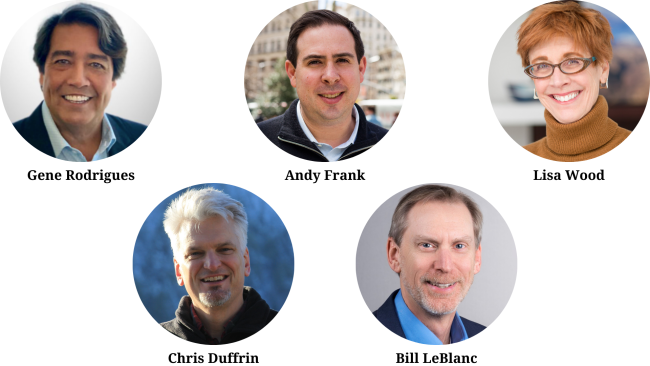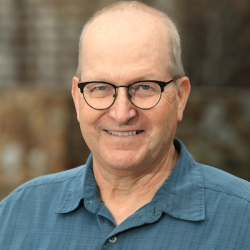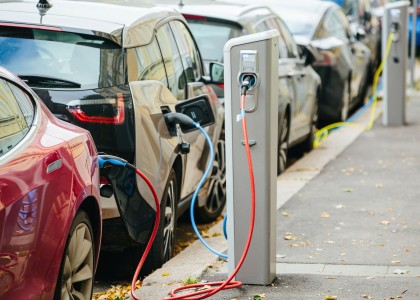Extreme weather events, exacerbated by rising temperatures, as well as mounting efforts to reduce greenhouse gas emissions have underscored the urgency of the climate challenge and the vital need for energy efficiency. We know that efficiency can halve emissions by 2050 and get the United States halfway to its climate goals. We also know that the actions utilities take to meet climate commitments are critical to those efforts. But how do we ensure progress? And can we achieve it equitably and quickly?
ACEEE takes on this issue next month at its 11th biennial National Conference on Energy Efficiency as a Resource (EER), the premier conference on policies and programs to reduce customers' energy waste and help utilities meet customers’ energy needs. This two-week virtual event will include more than 20 interactive sessions, networking breaks, four half-day workshops, plenaries, and a lightning round session.
“We’re closing the conference with a bang,” says Gene Rodrigues, vice president of market development at ICF and moderator of the last plenary—Getting Energy Efficiency to Scale: Breakthroughs and Breakouts. He says speakers will share “no-holds-barred perspectives” on moving beyond status-quo thinking about efficiency policies and programs. “There will be no ‘admiring the problem’ allowed during this closing plenary,” he says. “Come to participate in a fast-paced and fiery exploration of what must be done to unleash the full potential of energy efficiency.”
To get a sneak peak, we asked a few questions of the panel’s four speakers: Andy Frank, founder and president of Sealed; Lisa Wood, vice president of customer solutions at the Edison Electric Institute; Chris Duffrin, president of the Center for Energy and Environment; and Bill LeBlanc, chief instigation agent at E Source. Here are excerpts of our conversation:
Why focus on the need to scale up energy efficiency (EE) to meet our climate goals?
Andy: I think scaling energy efficiency (and the challenges thereof) is the elephant in the room. At our current pace, it will take more than 500 years to retrofit every home in America. But we don't have 50 years, much less 500 to make this happen. So if we're not talking about solutions that scale, we're not serious about addressing our climate challenges.
Chris: We are not going to be able to solve the climate crisis simply by constructing a 100% clean grid and electrifying everything. There’s a lot to do on the supply side, but if we are going to meet the challenge, we have to make energy loads more efficient, responsive, and optimized. I’m reminded of the old Regulatory Assistance Project line: “Efficiency is the answer. Now what’s the question?” We have to get it in gear and start scaling—like now.
Lisa: Energy efficiency provides key benefits in achieving carbon reductions. A cleaner energy future means dramatically reducing carbon emissions, and EE is a flexible part of the solution to this problem.
What are the largest barriers to scaling energy efficiency rapidly and equitably?
Bill: The implementation side of the efficiency industry has been built in a piecemeal fashion. Utilities and some government agencies, mostly local, all have their own unique approaches to solutions, incentive design, and marketing/implementation methods. This means it's tough to get economies of scale, which are seen in other industries that are more consolidated. HVAC, lighting, and building contractors also are very localized. So it's tough to get everyone rowing in the same direction. The biggest equity barrier continues to be the landlord-tenant gap.
Andy: There are many barriers to scaling energy efficiency, but fundamentally the industry focuses on the wrong value propositions. Historically, energy efficiency has been sold as a vegetable—it is good for you and prudent to save money on your energy bill. But people don't like vegetables :). The good news is that energy efficiency actually means a healthier, more comfortable quality of life. In other words, to scale, energy efficiency needs to be sold as having your cake (and eating it too).
How can these barriers be overcome most effectively?
Bill: When we conducted a two-day design workshop in late 2019 with some of the smartest EE people in the country, we addressed this very question. The top answer that resulted was pushing more midstream and upstream programs. Right behind that recommendation was to create standardized approaches to EE implementation so that scale can be reached and costs can drop. The third answer was to push for more building code efficiency statutes (mostly state and local). These are all tough to accomplish but would each contribute greatly to overcoming barriers to EE adoption.
Chris: Significant federal investments like we see in the U.S. House reconciliation bill proposal for both efficiency and electrification sure would help. Perhaps more important than the dollar amounts in the bill is the 10-year commitment the House proposes for these investments. To scale up a larger, more diverse energy efficiency workforce, we also need long-term commitments and funds for worker training. Strong state policy remains critical, but we need a significant federal policy response.
Which sector of the economy is ripest for scaling efficiency and why?
Bill: Tough question. It may not be as much about the sector as it is finding the right households and businesses that are most ripe for EE from a readiness and potential savings perspective. We need to use our rich data sets and data science to reach the right customers at the right time with the right messages. My second answer is that the sector with the biggest efficiency potential is transportation. Electric vehicles are so much more efficient than ICE (internal combustion engine) vehicles, and can use carbon-free energy more readily, as well as providing grid advantages.
Chris: The correct answer is probably transportation, because of recent technological advances and just how behind we are in the United States in this area. But I think there is a case for building-shell efficiency, particularly in the residential and multifamily sector. We have been field testing cold-climate heat pumps for the past seven years and are impressed by the advances in this technology, but in order to maximize their potential for heating electrification, we are going to have to dramatically improve the efficiency of our building stock, particularly in our colder regions. Air sealing and insulation are the enabling technologies for electrification in the North.
Which breakthrough or breakout in particular holds great promise?
Andy: I think air source heat pumps are still an unappreciated energy efficiency technology. For me, they are the closest thing to magic that we have in energy efficiency. And the manufacturers have made tremendous gains over the last 10 years to ensure that heat pumps can work in even the coldest climates. At Sealed, we have seen amazing response to air source heat pumps—people just love them and not always for the reasons you think.
Lisa: Once we start to measure electric utility energy efficiency programs in terms of carbon reductions (in addition to kWh savings, which is happening in California), heads will turn. This will take energy efficiency out of its silo and help scale it to levels we haven’t seen before.
Are you optimistic that we can scale efficiency quickly and massively enough to address the climate crisis?
Lisa: Corporate customers today are moving beyond simple renewable energy solutions to achieve carbon reductions… As “suppliers” start to shape solutions for corporate customers, energy efficiency and demand response will be a part of these solutions, because they allow customers to better time their energy use (as does storage, but EE is so much cheaper). I see this as the pathway to scaling EE—it becomes part of the carbon reduction pie and is very, very cost-effective.
Andy: I'm very confident that we can scale efficiency as long as we are bold and work our way back from what is required to address the climate crisis. I'm a history nerd and am always inspired by the way in which successive generations have addressed problems that seemed both existential and unsolvable at the time. Ultimately, we need bold policy solutions through performance standards and other mechanisms, but industry needs to do its part by demonstrating how energy efficiency solutions can not only scale but actually lead to better quality of life. Think Tesla not Volt.






